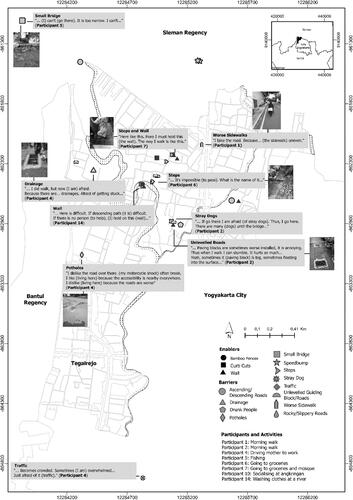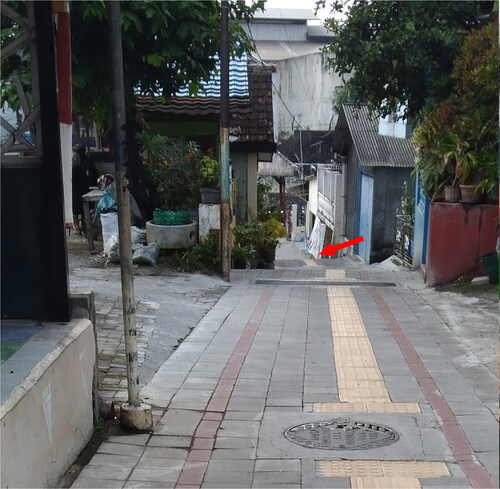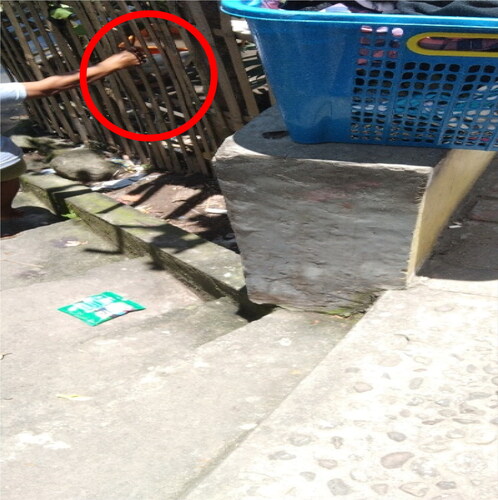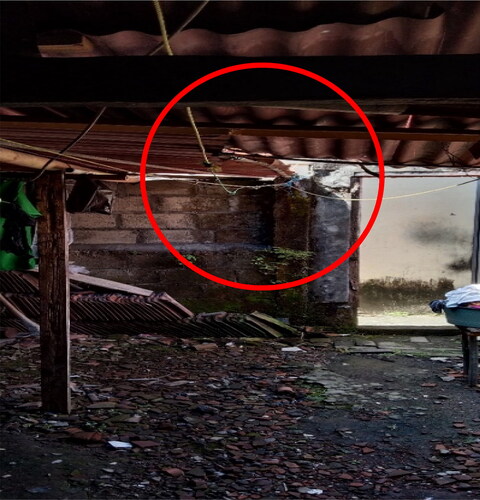Figures & data
Photo 1. Participant 6 was helped by her carer to move her wheelchair when passing a block paved road to go to a grocery store. The paving blocks were poorly installed. They popped up, making the road surface bumpy and restricting wheelchair’s movement.
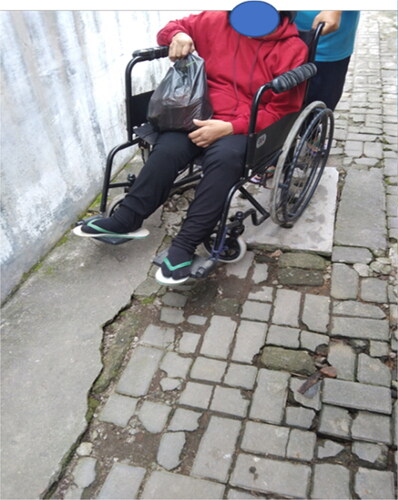
Photo 2. Paving blocks along Participant 10’s journey to an angkringan (street food stall). They were better installed but the road surface was still not flat.

Photo 3. Tile and ceramic surfaces can be found alongside Participant 7’s routes to mosques. The surfaces of these materials were slippery.
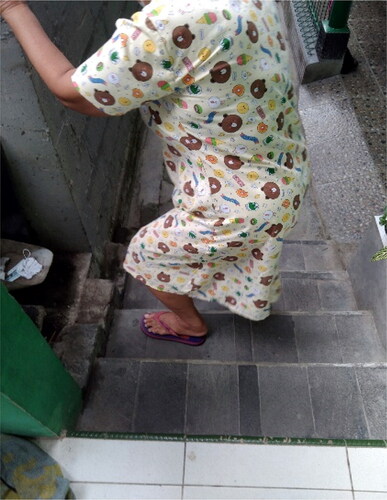
Photo 4. A photo of Participant 1 on a wheelchair and his carer. Participant 1 usually passed concrete roads in his weekly morning outing. The concrete roads had flat surfaces which improved comfort for wheelchair users..
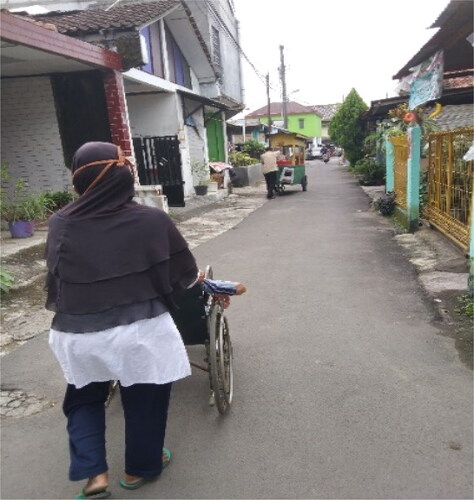
Photo 5. A photo of Participant 1 on a wheelchair and his carer. Participant 1 prefered to go through the road with his wheelchair, because the sidewalk was in poor condition, with cracks and grass growing on it.
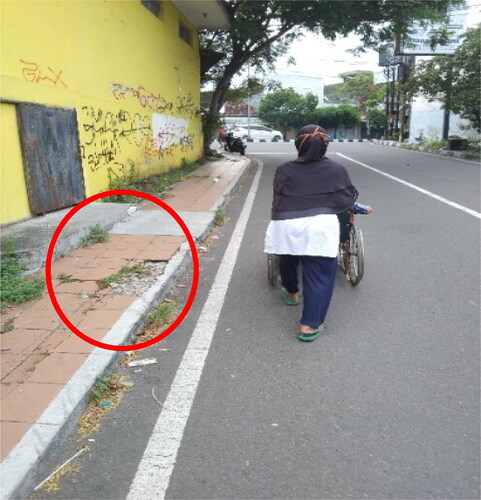
Photo 7. An illustration of a neighbourhood in Tegalrejo with flat terrain far away from riverbanks.
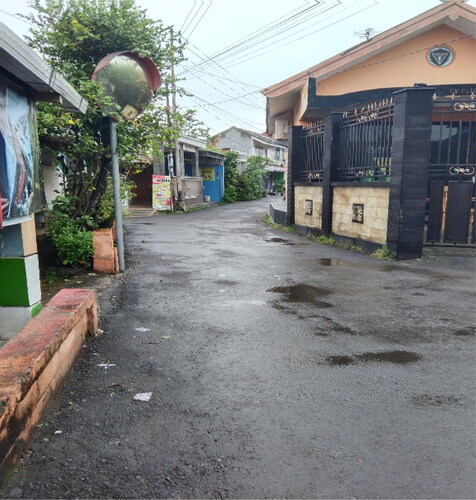
Photo 8. A map depicting spatial distribution of mobility barriers and enablers in Tegalrejo’s neighbourhoods. Participants’ activities varied, including going to morning walks, driving their mother to work, fishing, groceries shopping, and washing clothes at a river. Mobility barriers encompassed drainages, potholes, small bridges, speedbumps, and steps, while mobility enablers consisted of bamboo fences, curb cuts, and walls. This map also includes quotes from participants describing their experiences towards mobility barriers and enablers in their daily activities. For example, Participant 2 reported her experience of mobility barriers by saying, ‘if I go there, I am afraid of stray dogs. Thus, I go here. There are many stray dogs until the bridge’. Another example is a quote about mobility enablers from Participant 7 who said, ‘Here is like this, Here I must hold on to this wall. The way I walk is like this’.
